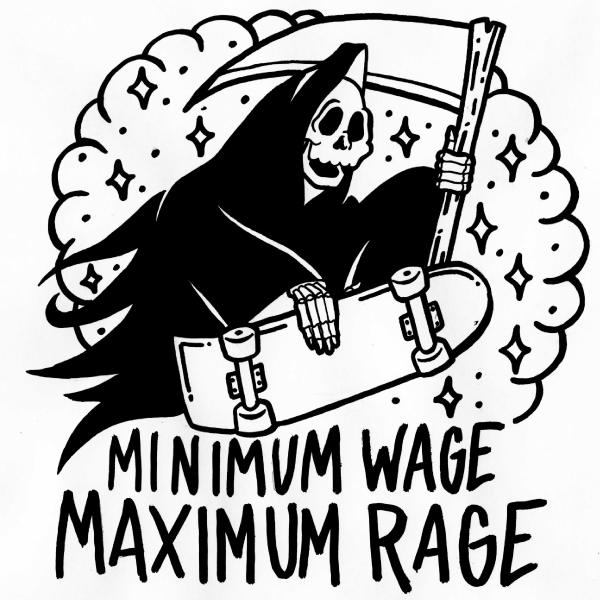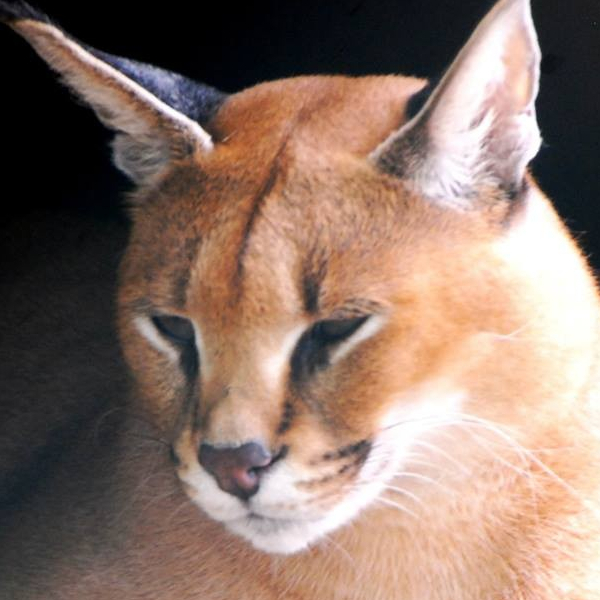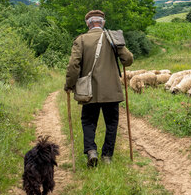Not just the bees, all bugs in North America have seen a 75% die off in the last 20 years.
Big shocker that songbirds, which eat those bugs, have also seen a massive die off.
Despite those deniers that still blame housecats, the true culprit is almost certainly pollution and pesticides.
Despite those deniers that still blame housecats
Both things can be true. They aren’t mutually exclusive.
Also we have less pollution and pesticide use than we did in the 60s and 70s. Why is it just becoming a problem now?
less pollution? that cannot possibly be true. according to dr google 1970s world population was 3.7b, now we’re more than double that
I’m the US, the EPA was created in the 1970’s. We definitely have less pollution (of certain types) today than we did in the past. Some notable examples of how disgustingly polluted American skies and waterways were in the past:
Coal Production has also been declining
And then of course less visible examples like the Montreal Protocol stopping corporations from depleting the ozone layer.
My point is in terms of greenhouse gas production we are much higher than in the 60’s and 70’s, but we have massively improved in a lot of areas. Of course there is still room to improve.
I’d say and cars just think about how many bug splatters you see on an average decent trip on the highway now multiply that by the millions of cars on the road daily. It’s not the root cause but it certainly didn’t help
Oh certainly can’t help. But we know that the pesticides and herbicides have carryon effects to unintended species. Ones that the parent companies that invented them didn’t report on because they don’t kill those species. Ones that don’t necessarily kill them, but lead to things like the white nose fungus running amock in bats, or lead to Colony Collapse Disorder or other infections in bee colonies.
Why would white nose fungus and pesticides be linked in the slightest? The issue with that is tourists who don’t want to admit they’ve been driving from national park to national park visiting each cave along the way without sanitizing anything. Same reason Zebra Mussels are spreading so rapidly. Just like people blaming 5G for COVID: It’s easier to externalize blame rather that come to terms with the, frankly, minuscule amount of spores that are needed to destroy the entire roosting colony.
Im gonna dig a pit in my backyard and make a pond. Its gonna be a lot of work but it will all be worth it when i sit out on my patio in the morning sipping coffee to the sound croaking frogs, buzzing bugs, and chirping birds.
You will want to be careful doing that. It needs to be big enough to have differential temperature so the water moves, therefore aerating it. Without air in the water nothing but mosquitos can live or breed in it. Also, depending on the soil and whether you are above the water line, you may not be able to keep enough water in it between rainfalls.
I’m sure you can look up how to do one properly, I just want to to be aware it’s not as simple as dig a hole and fill it with water, because that will do more damage than good.
Of course I’ve been doing a lot of research dont worry. And also I’ll be using a pond liner
“it’s your neighbors fault for having a lawn!”
meanwhile monsanto……
Is there a nolawns community here?
Weirdly enough, it’s small on reddit, and the biggest are on Facebook ¯\_(ツ)_/¯
Facebook users typically skew older, so people that are more likely to have established careers, larger spaces and yards to work on. I feel like a lot of Redditors and Lemmings are young and live with parents or in apartments, and are thus less likely to have a yard to care for.
That being said, anyone with a deck or porch can pot a plant or two to try and help local pollinators.
I started doing clover in my yard a year ago and there are so many bees and butterflies now. My neighbor was like “why are you doing that yo your grass??? The previous owners took so long to make that yard look nice”
“Why are you destroying your yard with an abundance of bees and butterflies? This isn’t fantasy land we need nothing but grass here to look nice”
When I moved in the grass was pretty close to the picture in the meme. I liked it at first but then I realized how expensive it was going to be to upkeep and how bad it is for the local ecosystem. I have successfully undone most of that work literally just by planting clover and not mowing down to the bone.
If only everyone realized that grass is just a weed and not worth the maintenance and effort we put into it, it’s sad how ubiquitous it is in some places
what do you do about weeds? does the clover stand up to traffic and dogs?
I dont really do anything about weeds anymore. I let the dandelions do their things. I have some patches of crab grass but it doesnt bother me. The clover doesnt grow very high but when it is full bloom you can tell when it is walked on in high traffic. We have wild turkeys too and they will roost on the clover and it leaves imprints in the ground but it springs back after a day or so.
I couldn’t find a source for this, but I heard that we were convinced to think of dandelions as weeds by the makers of a herbicide so that we would accept the collateral damage.
Dandelions were brought to North America as a food crop. We can eat every part of the plant. They’re an invasive species, but not what I would consider a weed.
Anything can be a weed. All a weed is it a plant growing is the wrong spot in the eyes of a human.
Agreed, but Monsanto would love us to believe all kinds of plants are weeds so we buy their chemicals.
A field of dandelion flowers is beautiful.
And also, a field of invasive species that drove out the native plants… Just saying.
Theres only one plant in my yard i consider a “weed”. It grows almost like a carrot or a parsnip. But it grows a long thick root straight down and has a small leafy part on top. And when you pluck them out it leaves a cone shaped hole. No clue what it is but ive been calling it a tuber lol
Lol, you don’t put Roundup on your lawn unless you don’t want a lawn anymore.
2,4D is the stuff that kills “weeds” but not grass.
Oh ok, I must have remembered wrong. I edited to be less specific.
Oh ok, I must have remembered wrong. I edited to be less specific.
Anecdotal evidence. There’s a patch of grass on my land next to a public mailbox that I struggled for years to keep from being a mud pit.
Haven’t seen a bare patch of dirt since I planted the clover. Holds up great to foot traffic.
does the clover spread?
Mine has from what I can tell but ive also seeded it a couple times a year.
We have a chemical free yard that I also plant clover in. The high traffic areas are more clover than grass, which makes me think it holds up better. The clover also turns green earlier in the spring and stays green longer of we’re having a dry spell in the summer. Clover helps keep the grass happy and the pair seem to do a decent job keeping dandelions down, but we have them in our yard too. They don’t bother me at all personally and our kids like them. Thistles are not that common in our yard, but when they pop up I’ll spot treat them since they’re painful to walk on.
I will admit there is something very pleasing about looking at a well trimmed yard. That said, the percent of the earth’s land surface covered by manicured lawns is tiny. The ag industry would love for you to believe your lawn is the problem. It isn’t. The problem is the monoculture farm land. Acres of fields with only one type of crop. And probably other things like pollution and such. But industries love to play the “you are the problem” card to divert from themsleves.
Yes, but also: Every little bit of help, well… helps.
Don’t let those industries playing the blame game discourage you from dedicating a part of your yard to a bunch of flowers, because then the problem would get ever so slightly worse.
Yeah but you could easily have a patch of lush green grass the size of this one in your lawn and also some nice flower beds, bushes, trees and whatever else. Most people want some of that, not just a plain garden with no features. The problem isn’t peoples’ yards, it’s pesticides.
This + a massive over usage of pesticides
I want to make a short film / animation where aliens are approaching earth, the only thing we know about the aliens is that they plan to destroy all life and replace it with their own twisted creation. A few minutes of typical story follows, heroes assemble, go to fight, etc. The heroes lose and the ending scene shows that the aliens have succeeded and replaced all the diverse life on Earth with a perfectly manicured lawn that covers the entire planet. A biological wasteland.
So is this like a whole movie with the premise of “the cage” from star trek?
Pretty sure one of the nearby planets to Earth in The Foundation series is like that.
An entire planet covered in sunflowers that shoot deadly ass rays against anything that comes close. Perfect homogeneity.
Remember it’s not just about saving honey bees! Honey bees are domesticated, which means that humans will make sure that they have food and shelter and appropriate medicine and care throughout the year to ensure they make honey.
Saving “the bees” moreso means saving wild, native, often times solitary bees like bumblebees or carpenter bees that don’t produce honey but that also aren’t domesticated - they have no safety net that humans give them.
Those bees along with all other pollinators like bats, birds, and other insects are the ones at risk!
Still, we should all consider growing native yards to return habitat back to these dying species!
The EU has uncultivated land subsidies. To avoid overproduction of food and overexploitation of the land, the EU pays farmers to keep their land uncultivated. Some countries, like mine, force farmers to uncultivate their land once every N years, and, of course, they get subsidies for this.
In my region, farmers will plant flowers and let weed grow, since they’re not putting any pesticide. They let the flowers and weeds die and rot at the end of the season. This way, they dont have to put as much fertilizer the next year. I’ve always seen these uncultivated fields full of bees and other pollinators in summer.
That happens in the US too. It’s why there’s New York addresses that own huge “fields” of land that’s usually a wetland. The marginal land is protected and they get a corn subsidy from the government to not farm the land.
I stopped cutting my grass and now I have rats :(
deleted by creator
Bold to assume we own yards
Your yard in your summer residence then. Jeez
Removed by mod
I have lived at my current property for nearly 7 years now, and while I cut the main area up against the house once a week, I typically let the rest grow out for a month. Never used sprays other than flea and tick for my dog’s yard, and never even pulled weeds.
Still, it’s almost all completely homogenous grass. Not sure what species, but it doesn’t grow very high. 3-5 inches. No wildflowers have encroached, no other grasses except clover, not even weeds other than dandelion. The only other thing that grows anywhere is some English ivy that’s pissing me off all over the house. Every time I pull some out and dig up the root, I find more a few days later.
Still, MUCH higher insect, pollinator, and other wildlife activity vs my previous residence. It’s been nice seeing fireflies again, even if it’s still nowhere near what it was when I was a kid.
Our yard is about 3" of top soil on top of basically solid clay. When we moved in a little over a decade ago I tried taking on the dandelions, but I quickly pivoted to planting clover. Now we have tons of the stuff, fewer dandelions despite no chemicals (not that I really mind them anymore), and our yard smells fantastic in mid to late spring when all the clover is in full bloom. Tons and tons of bees, crickets, etc. We re-did a flower bed and intentionally planted swamp milk weed and red crocosmia in it. They look fantastic together and the bees absolutely love it, not to mention the butterflies.
But yeah. About English ivy. Been fighting that stuff for years…
Switch it for a proper garden.
https://lemm.ee/c/permaculture approves of this post.
Hi there! Looks like you linked to a Lemmy community using a URL instead of its name, which doesn’t work well for people on different instances. Try fixing it like this: !permaculture@lemm.ee
Good bot!
great bot
I only mow at the last possible second to not get a fine, has been working really well for my yard. I have seen flowers, corn, and a beautiful assortment of creepers and clovers start taking over the sterile grass. My neighbors neighbor seems to get butthurt. They take care of my direct neighbors yard whom I share a chain link fence with, she loves my vines with the flowers and strange gourds that wind around the fence. Neither of us planted it but the people who tend her yard destroy it 😭if we just let everything happen naturally some very cool things start to crop up. I’ve seen some absolutely massive grasshoppers and a bunch of praying mantis as well. My bee hotel never attracts anything but I’ve seen plenty of bees about which makes me happy.
I prefer a garden full of grown weeds than a clean grass cutted one. If a weed can grow and prosper without me watering it once a day, I think they deserve the right to be there more than anything my father ever planted on his yard that would die without getting water for 3 days or too much rain water.
Agreed, except thistle plants can go fuck themselves. I rip those out at least once a month and they keep coming back and crowding out the plants I want.
ironically one of the better weeds for pollinators
That figures… I’ll be working to overseed clover next year, so that should help make up for it.
Are you actually growing native plants or do you just not care that you’re growing a massive amount of invasive on what we would call marginal lands?
uhhhh most weeds provide almost zero food for pollinators. literally just as bad as grass.
Mine is an acre of natural meadow.
if I didn’t take care of my lawn, I’d have invasive Bermuda grass getting into everything and it would kill all the other plants. I’ve also looked into overseeding with mini clover but I’ve read that it doesn’t tolerate traffic well. open to any suggestions as I’m fighting a losing battle with fescue and the damn Bermuda.
Fescue is amazing grass. I suggest overseeing with an aggressive ryegrass if you really have issues, but just let the Bermuda grass be. Otherwise add in some microclover seed for good measure.
But I thought grass is bad
Monoculture anything is bad. For example, many parks will have tons of trees but if you pay attention you’ll likely on see the same handful of species.








